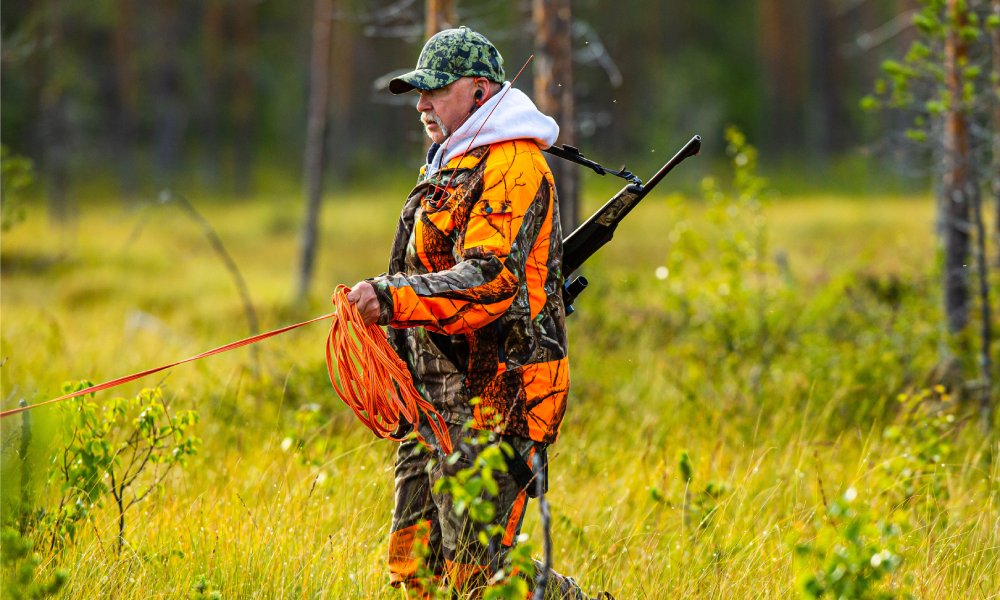Part of being a hunter means learning how to treat the animals we kill with dignity and respect. The problem is, when you land a shot, be it with a bullet or arrow, game doesn’t always go down easy and may end up mortally wounded but alive.
Even if it’s sure to die, it’s critical to recover the animal and minimize its suffering. In this guide, we’ll teach you how to track down and recover wounded game for more respectful and ethical hunting practices.
Mark the Shot Location
Marking the shot location is an essential step in tracking down and recovering wounded game. As a responsible hunter, it’s crucial to have a clear understanding of where your shot landed to help you determine the severity of the wound and guide your tracking efforts.
After taking the shot, take a mental note of the exact spot where the animal was standing or the area it was last seen. Look for landmarks or distinctive features in the surroundings that can serve as reference points. If possible, mark the location with a physical marker, such as a flagging tape or a GPS waypoint. This will help you maintain a sense of direction and prevent confusion as you begin your search.
Start With the Blood Trail
Blood trails are invaluable indicators that can lead you to the wounded animal. Approach the shot location calmly and attentively, scanning the surrounding area for signs of blood. Look for droplets, splatters, or smeared blood on vegetation, trees, or the ground.
The color, consistency, and quantity of the blood can provide insights into the severity of the wound. Vivid red spurts might indicate an arterial hit; if it’s frothy, it may be a lung hit, but if it’s dark, you likely hit the lower abdominal area.
Study Game Behavior
Studying the habits and patterns of the species you’re pursuing is the key to tracking and recovering wounded game. As a result, you can more easily anticipate their movements and increase your chances of a fruitful hunt. Take the time to observe and learn about their feeding, mating, and bedding habits. Pay attention to factors such as weather conditions, time of day, and seasonal changes, as these can greatly influence game behavior.
Additionally, familiarize yourself with the specific terrain and habitat preferences of your target species. This knowledge will help you strategically position yourself and plan your hunt accordingly. If you’re unfamiliar with their typical movements and behaviors, most experienced outdoorsmen use a trail camera to study the area beforehand.
Use Tech for Effective Tracking
Advanced tools and gadgets have emerged, offering a range of benefits to enhance tracking capabilities and increase the chances of a successful hunt. For example, the rangefinder utilizes laser technology to accurately measure distances between the hunter and their target. This information is invaluable for making precise shots, increasing your chances of a quick kill.
Additionally, thermal drones can help hunters locate game in low light or dense vegetation, improving their chances of spotting elusive animals. However, it is important to emphasize that while technology can be a valuable tool, it should always complement the skills and knowledge of the hunter.
Responsible hunting practices and ethical decision-making should remain fundamental, preserving wildlife and ensuring that future hunters have the chance to enjoy the sport.


